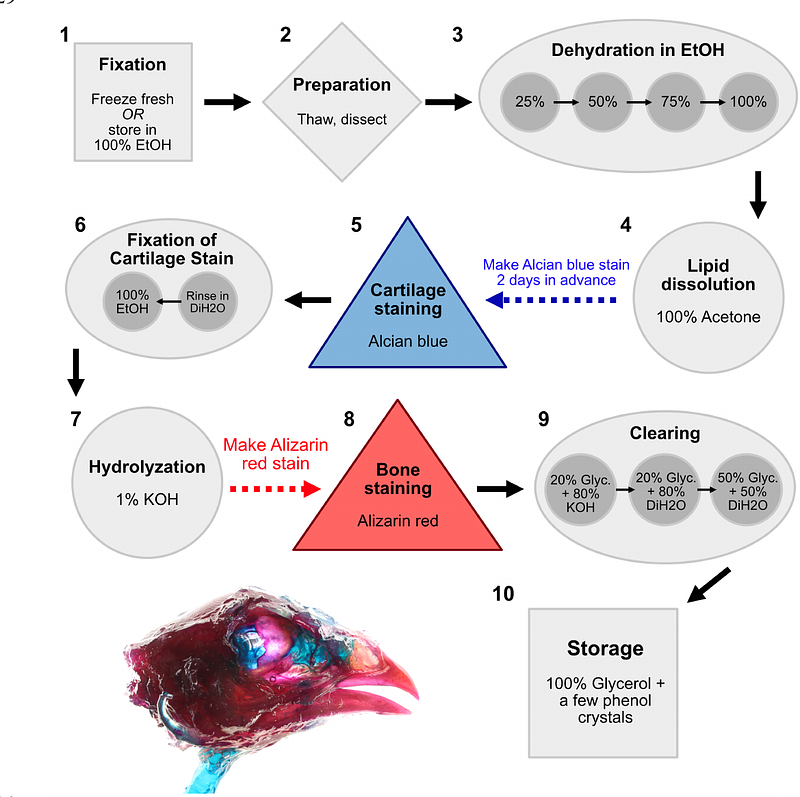Bone and cartilage staining protocol for large avian specimens: late-stage embryonic emu (Dromaius novaehollandiae) and adult chickens (Gallus gallus)

Bone and cartilage staining protocol for large avian specimens: late-stage embryonic emu (Dromaius novaehollandiae) and adult chickens (Gallus gallus)
Taylor, M. J.; Green, T. L.; Guilhon, G.; Lowi-Merri, T.; Watanabe, A.
AbstractThe ability to consistently and clearly visualize discrete anatomical parts of a specimen is crucial for biological research. For skeletal tissues, a classic and widely adopted technique uses a combination of Alizarin red for bone and Alcian or toluidine blue stains for cartilage. Published protocols for these stains have generally been optimized for small or prenatal specimens; thus, leaving out applications to relatively large specimens including somatically mature specimens and embryos of large-bodied taxa. Here, we present a newly refined, detailed protocol, accompanied with photographs, for clearing extraneous tissue and staining bone and cartilaginous structures optimized for larger avian specimens, including adult domestic chicken (Gallus gallus domesticus) and late-stage, embryonic emu (Dromaius novaehollandiae). The latter exhibit relatively mature soft tissue, including skeletal muscles, compared to those of late-stage embryos of small vertebrate taxa such as domestic chicken and mice. We found through our experiments that the combined Alcian blue and Alizarin red staining works best on freshly frozen specimens compared to those fixed in formalin and effective clearing and staining was possible without the use of tissue digestion reagents, such trypsin and pancretin. The central aim of our work is to offer a step-by-step guide that provides researchers to consistently and effectively stain skeletal tissues in larger vertebrate specimens, allowing investigation of skeletal tissues at broader developmental and taxonomic scales.